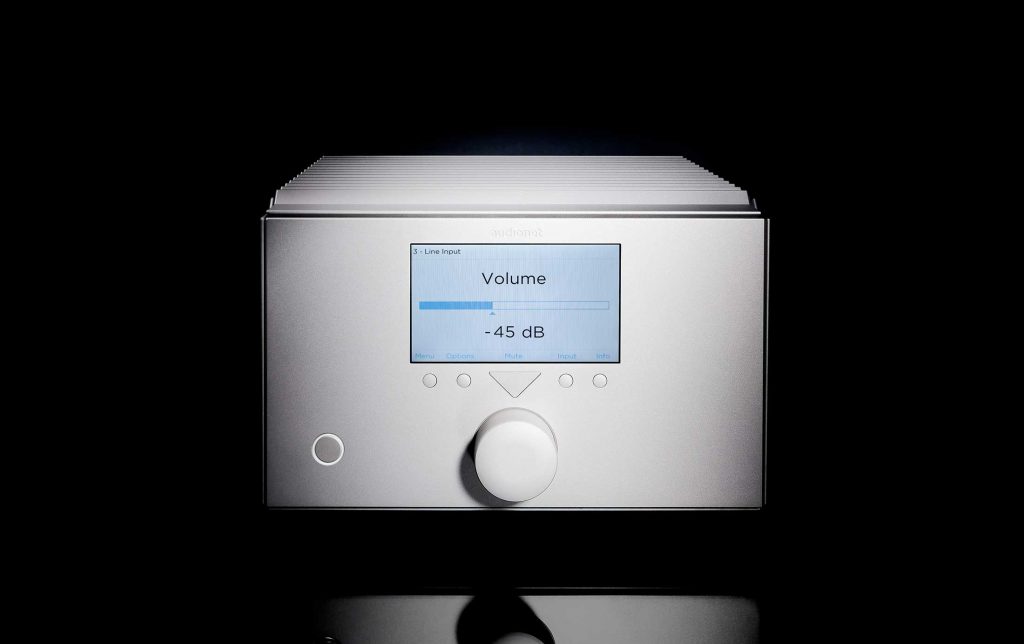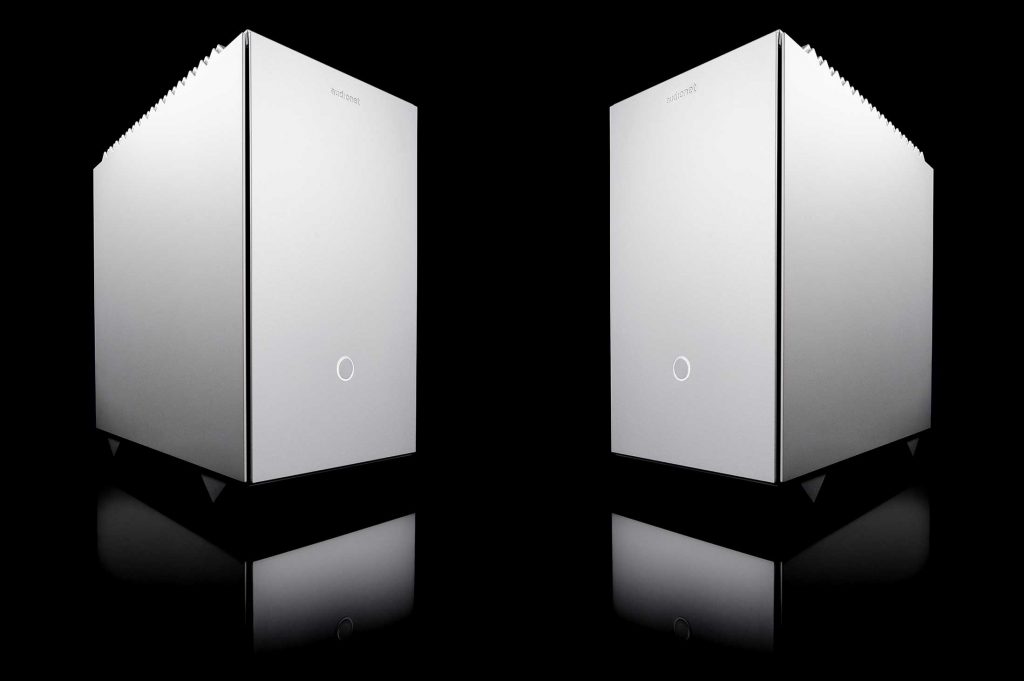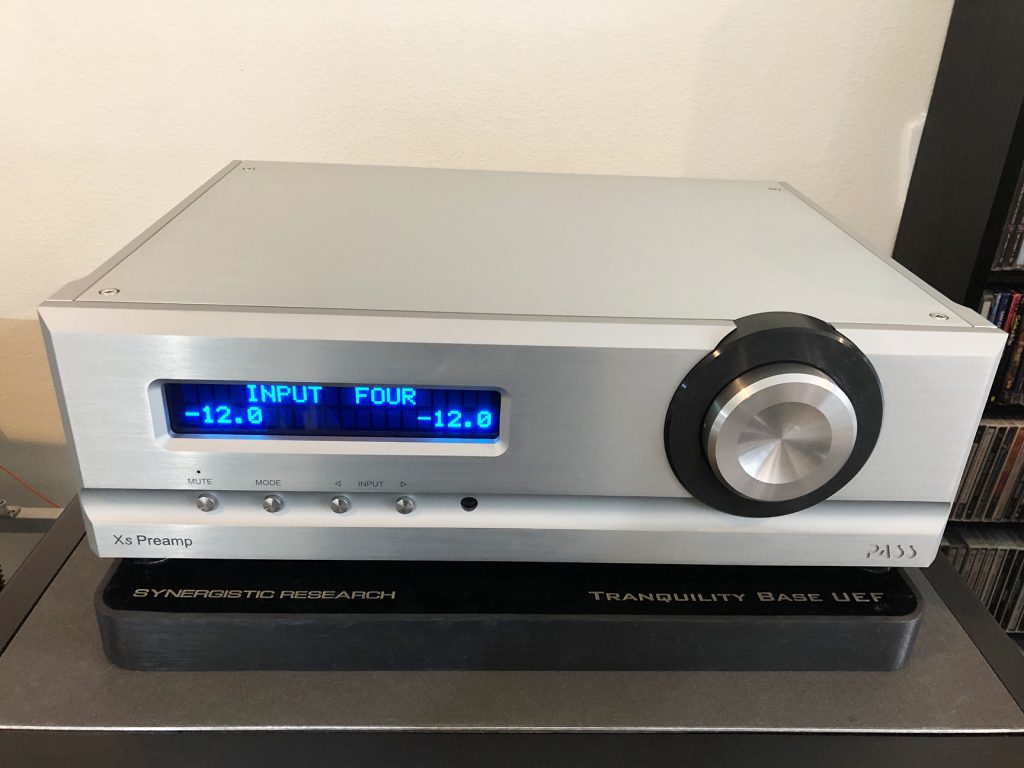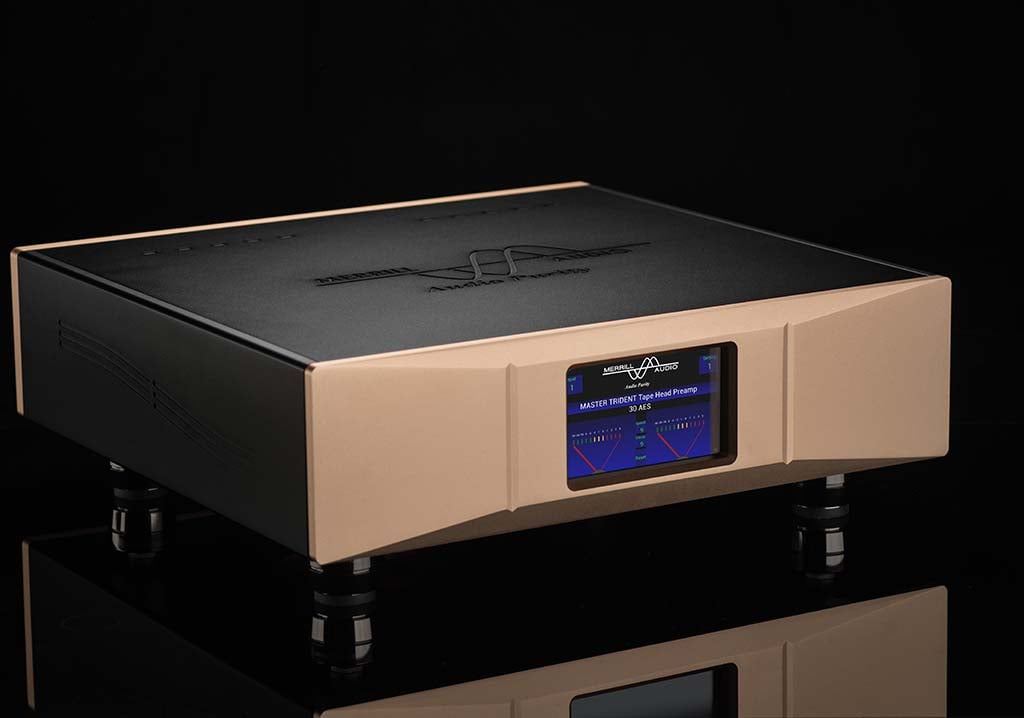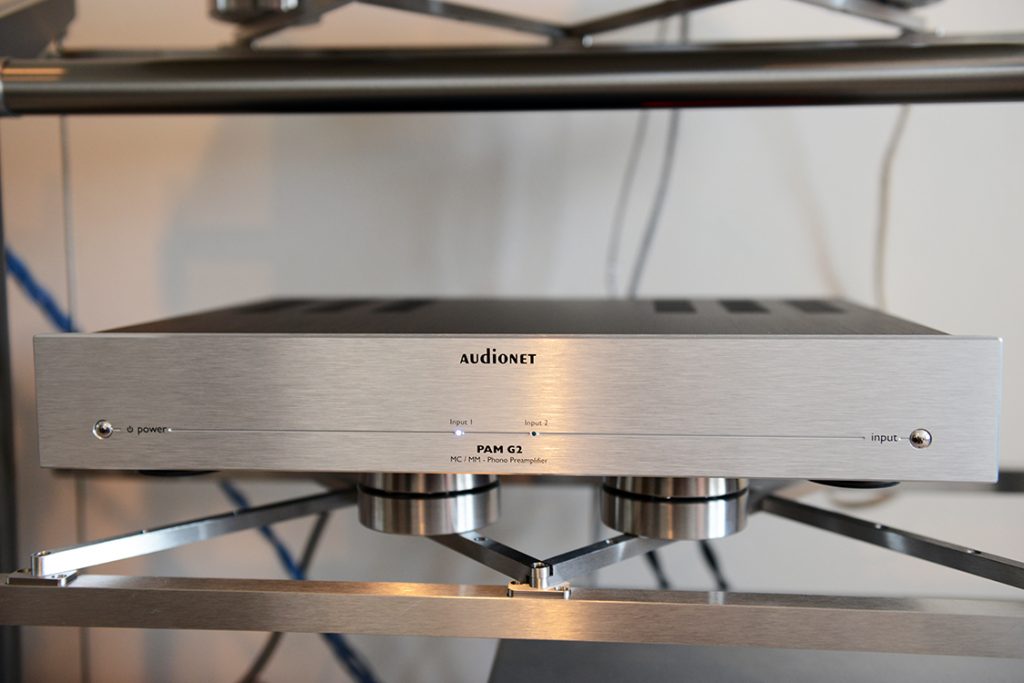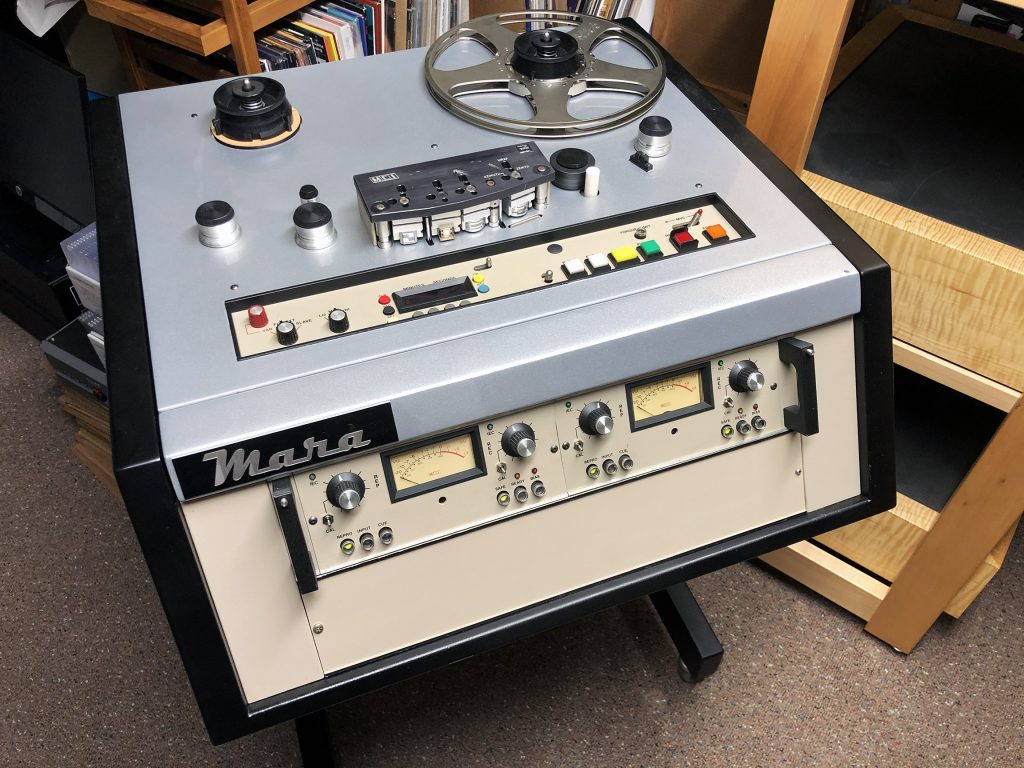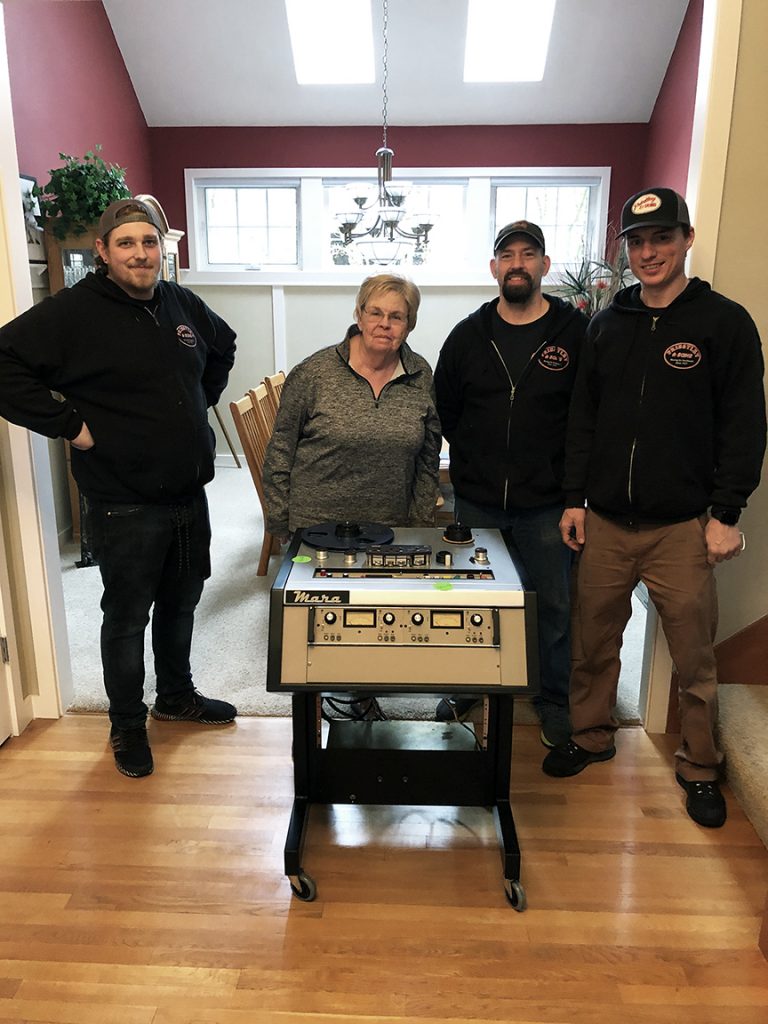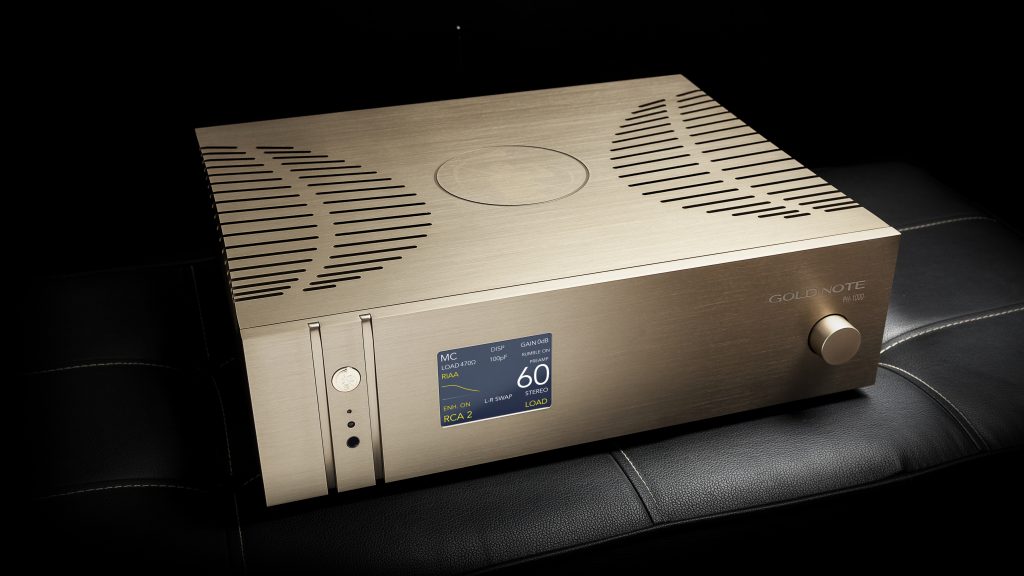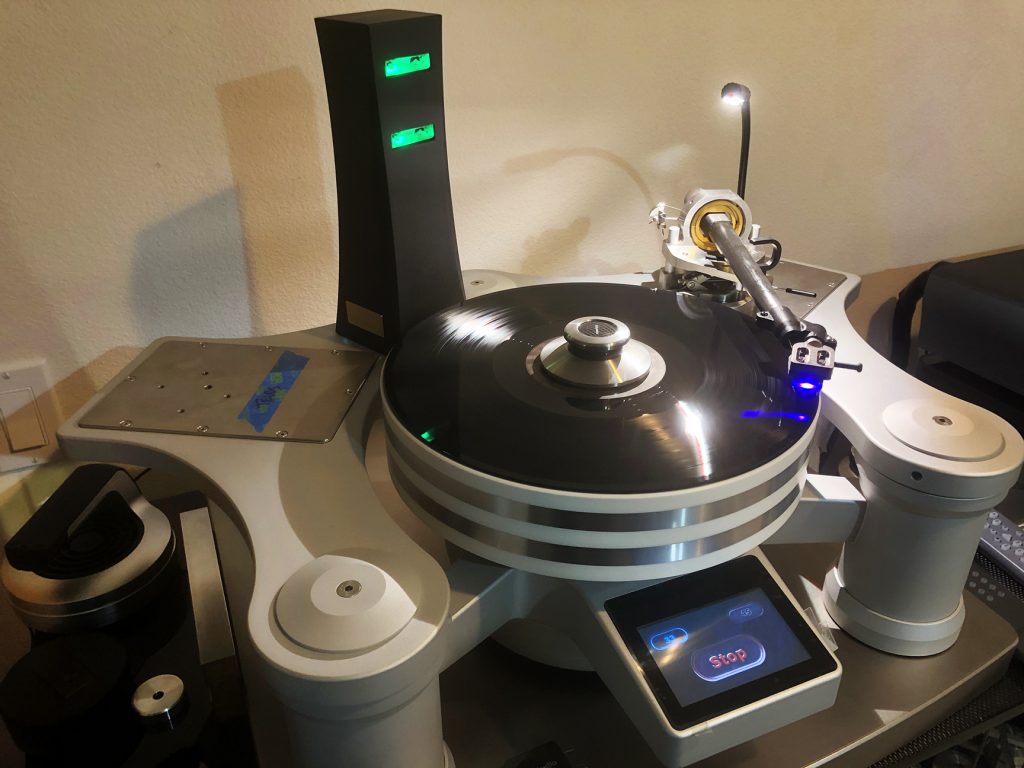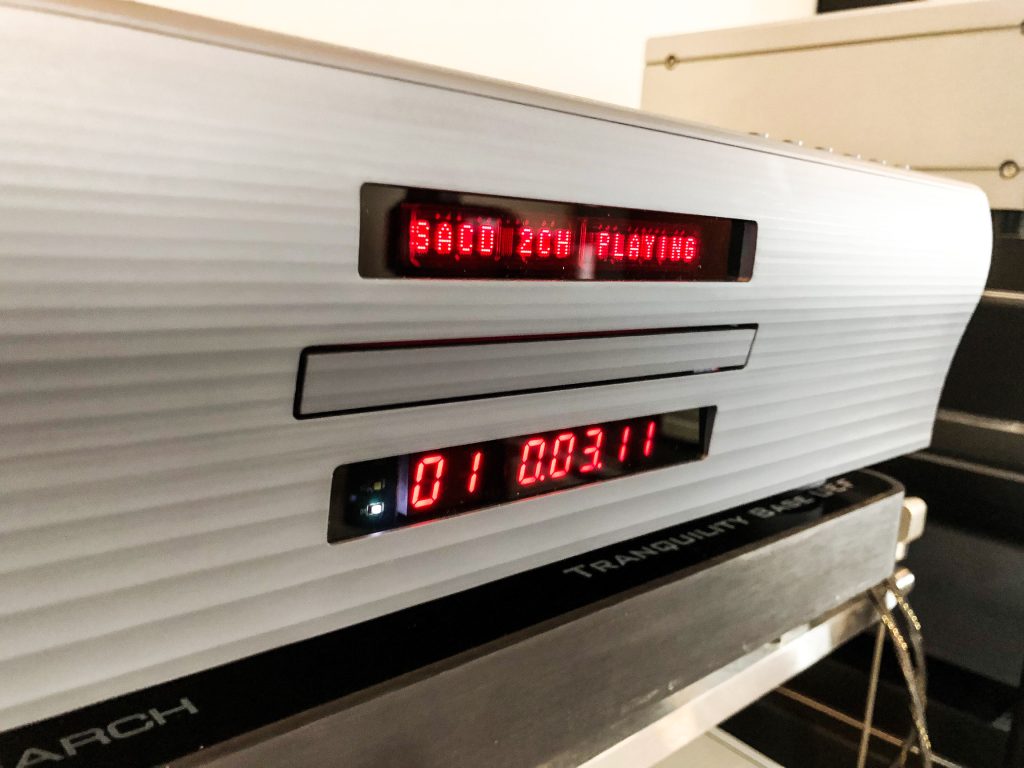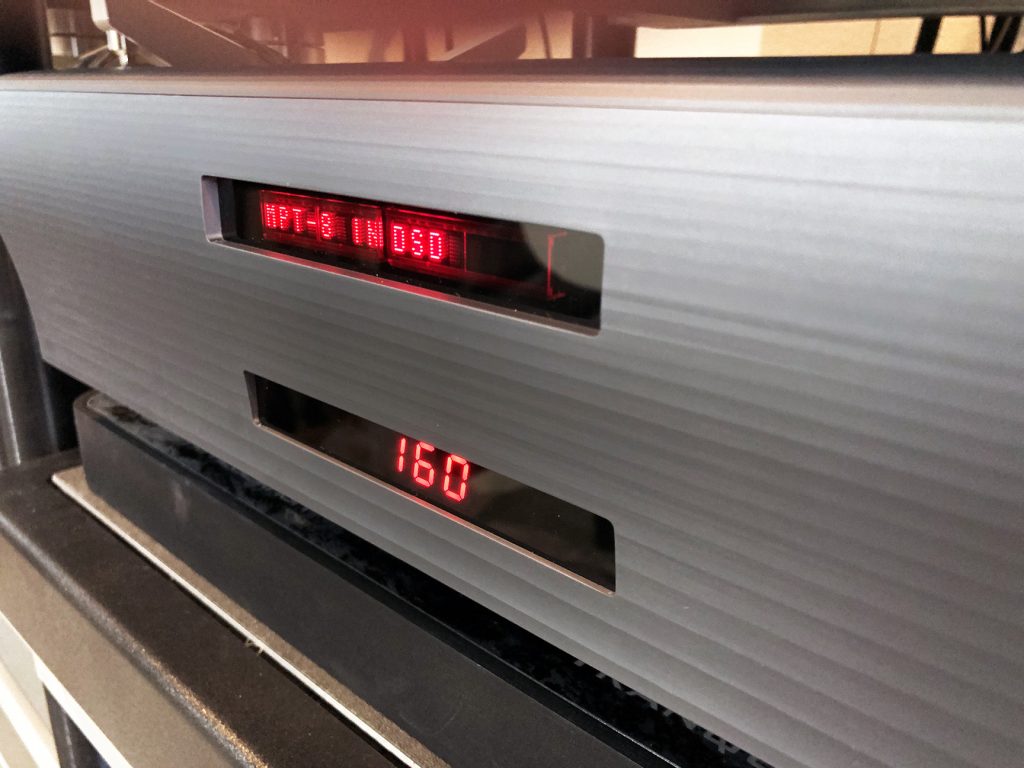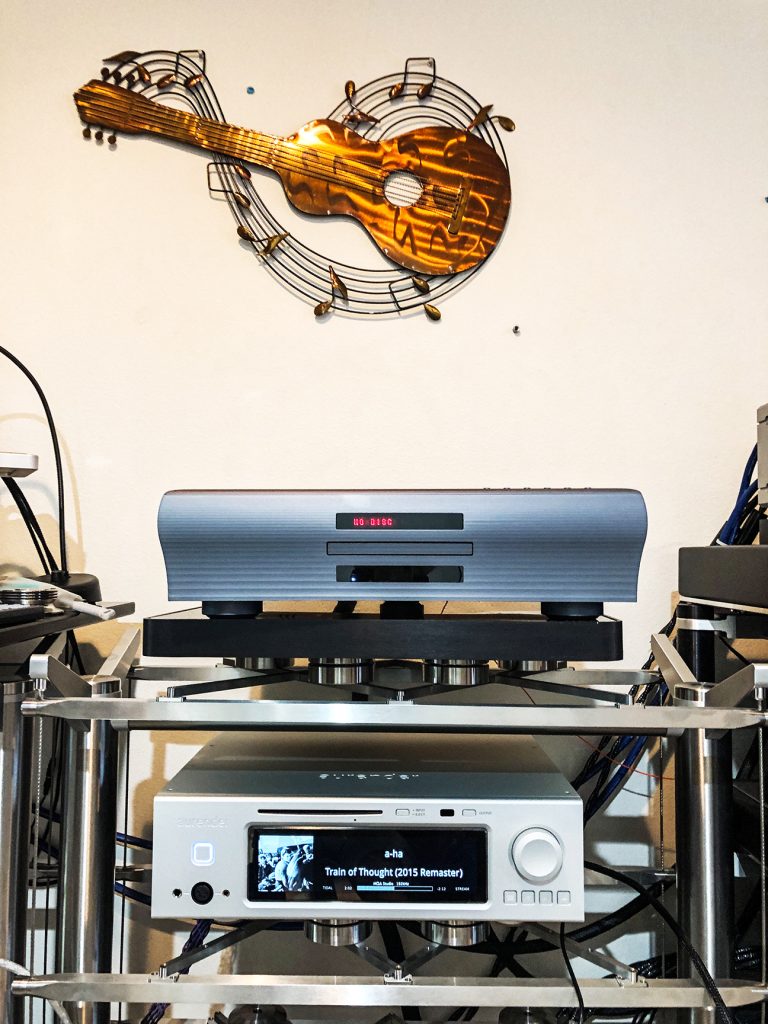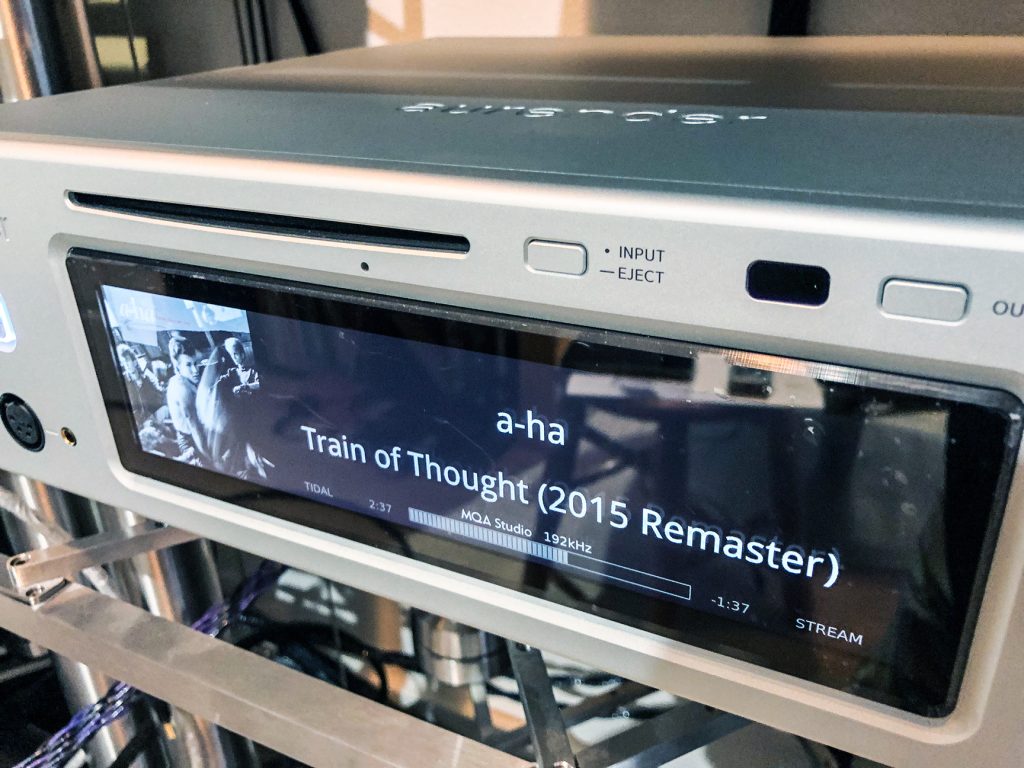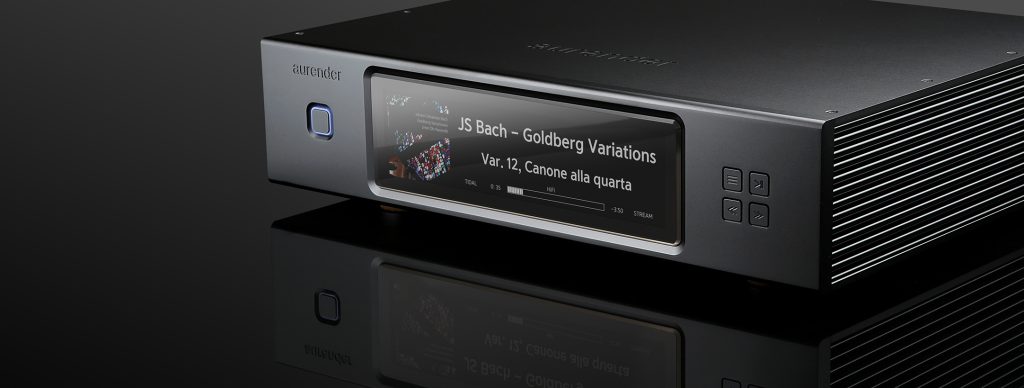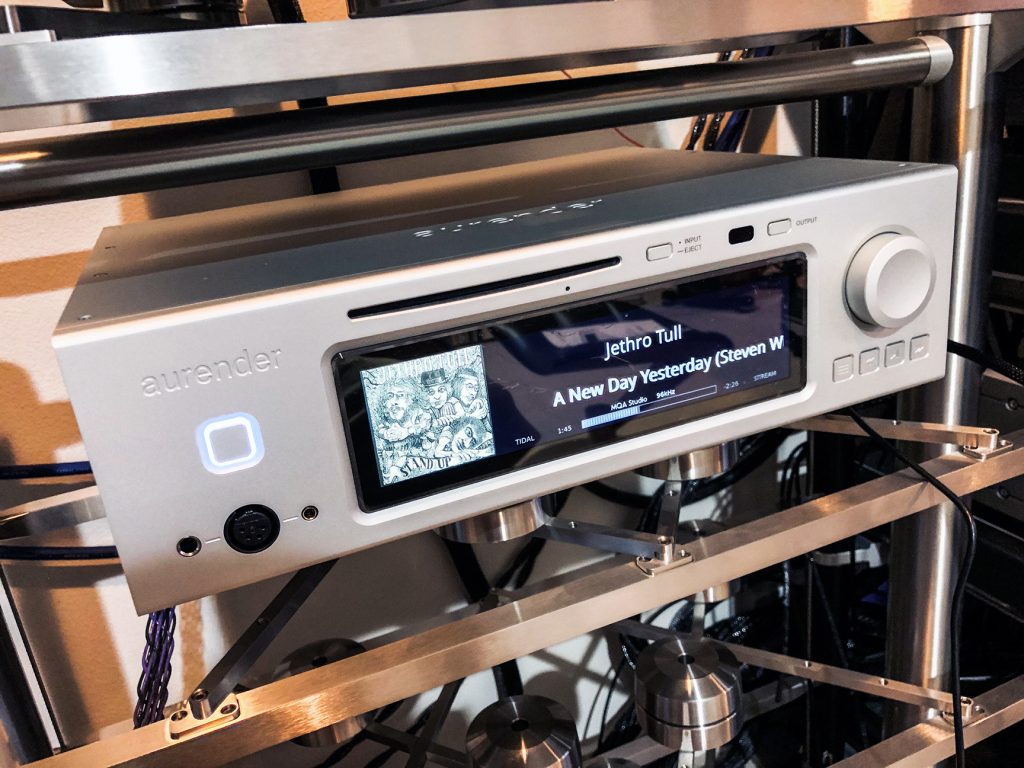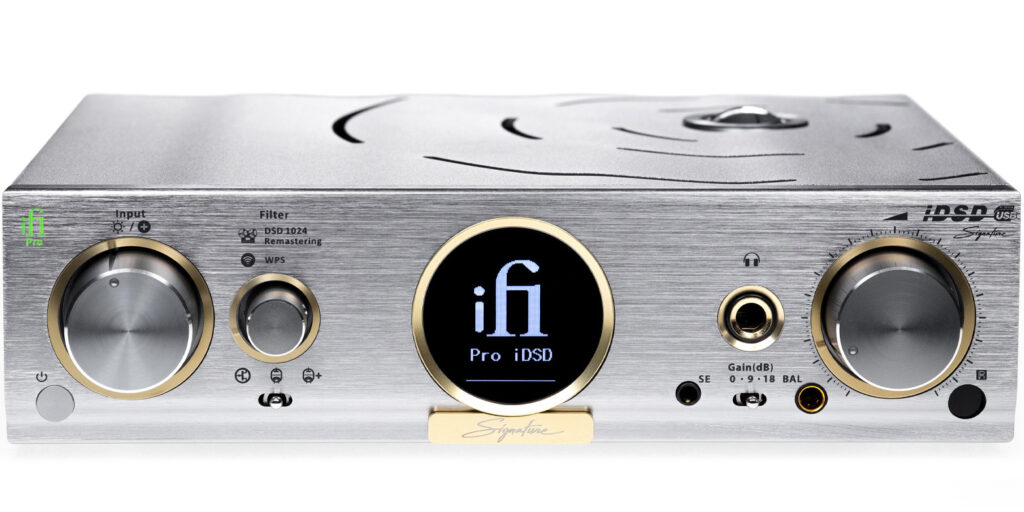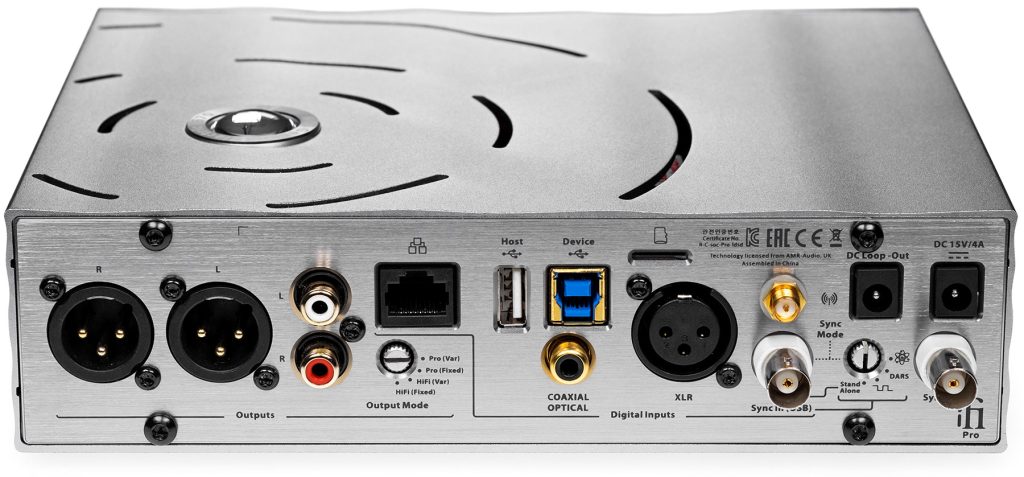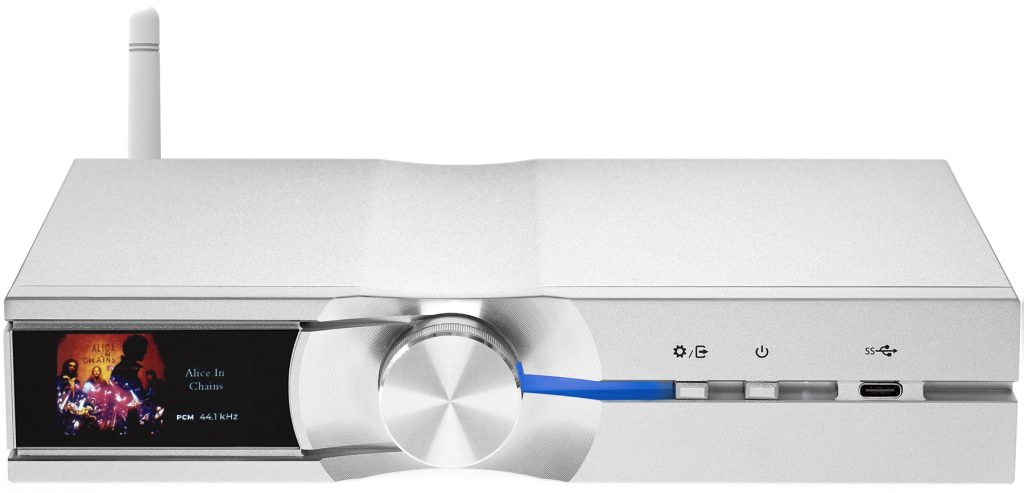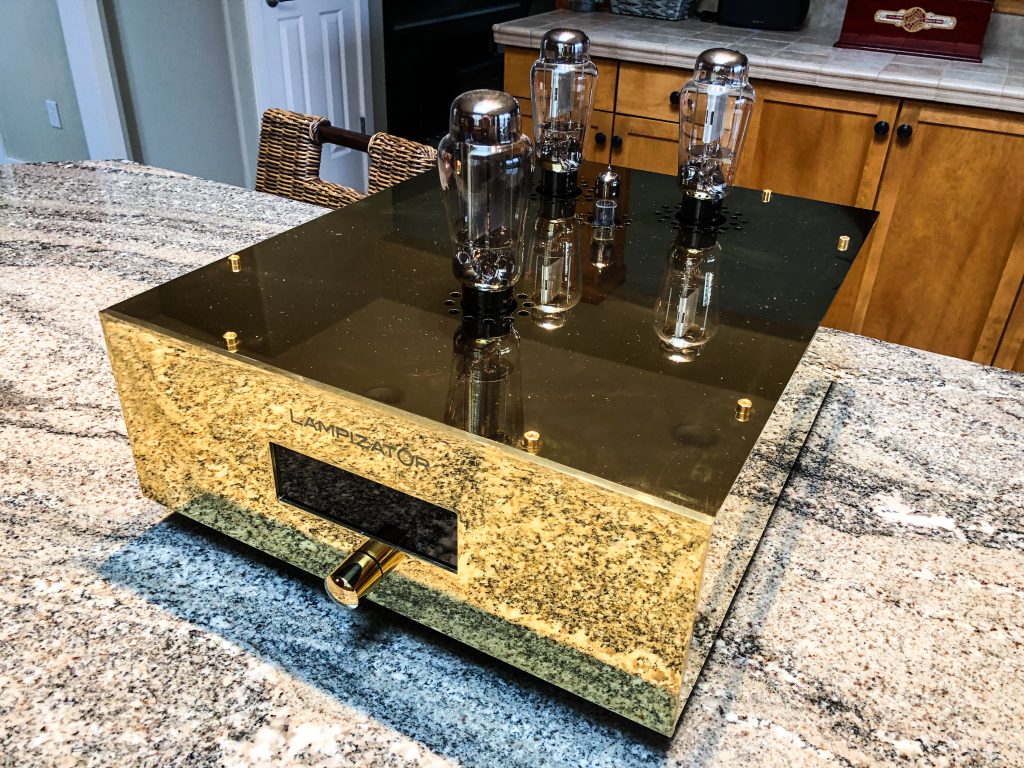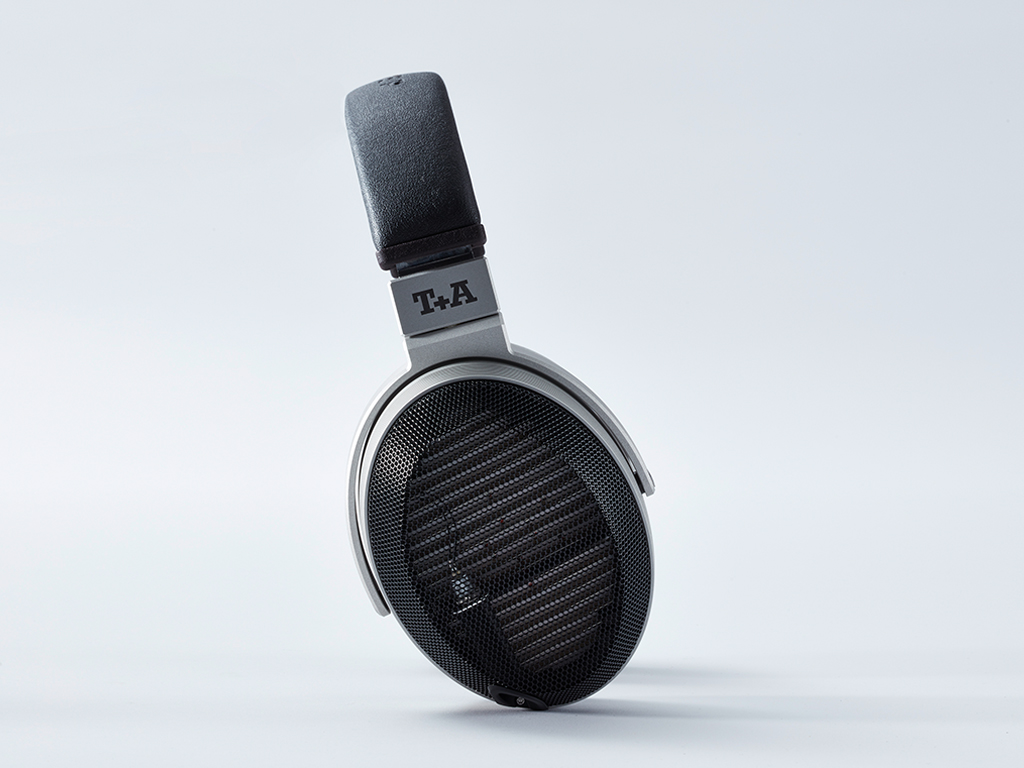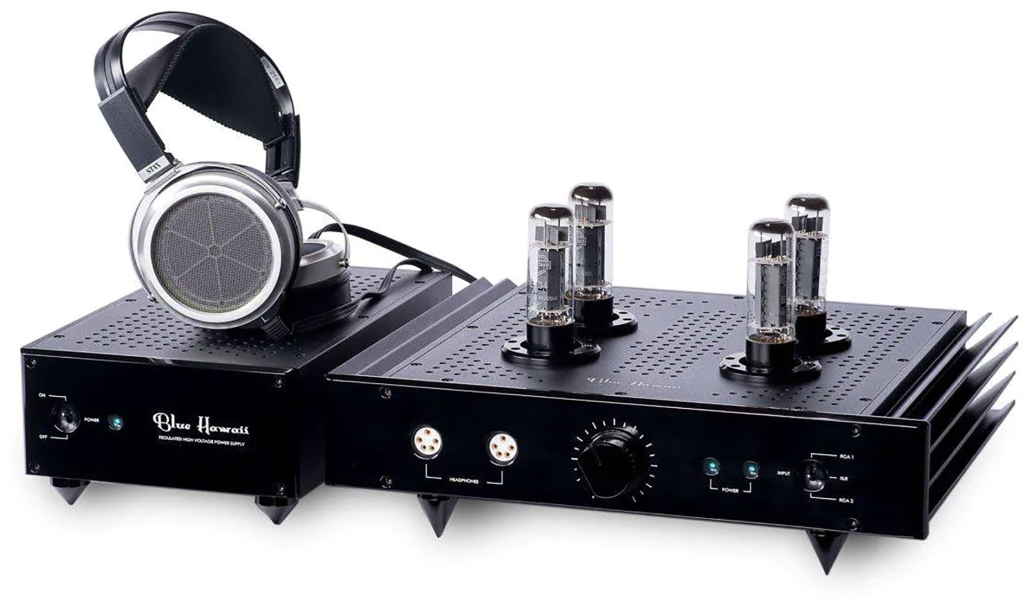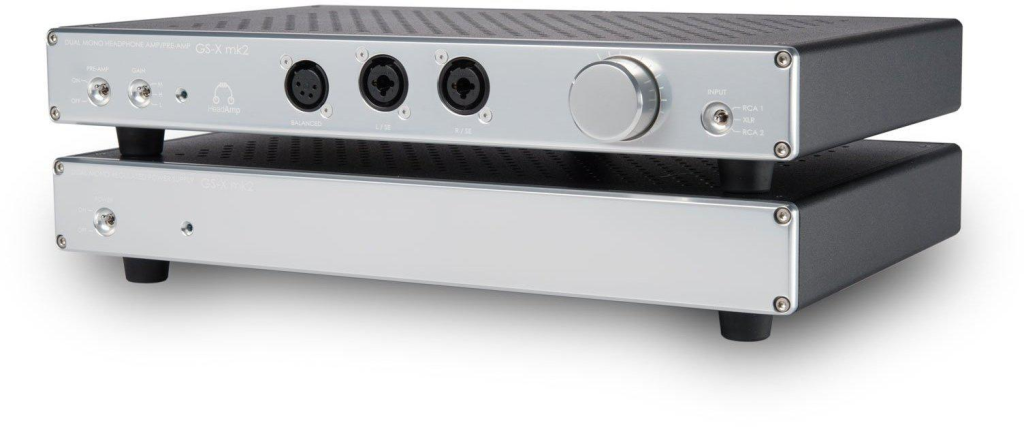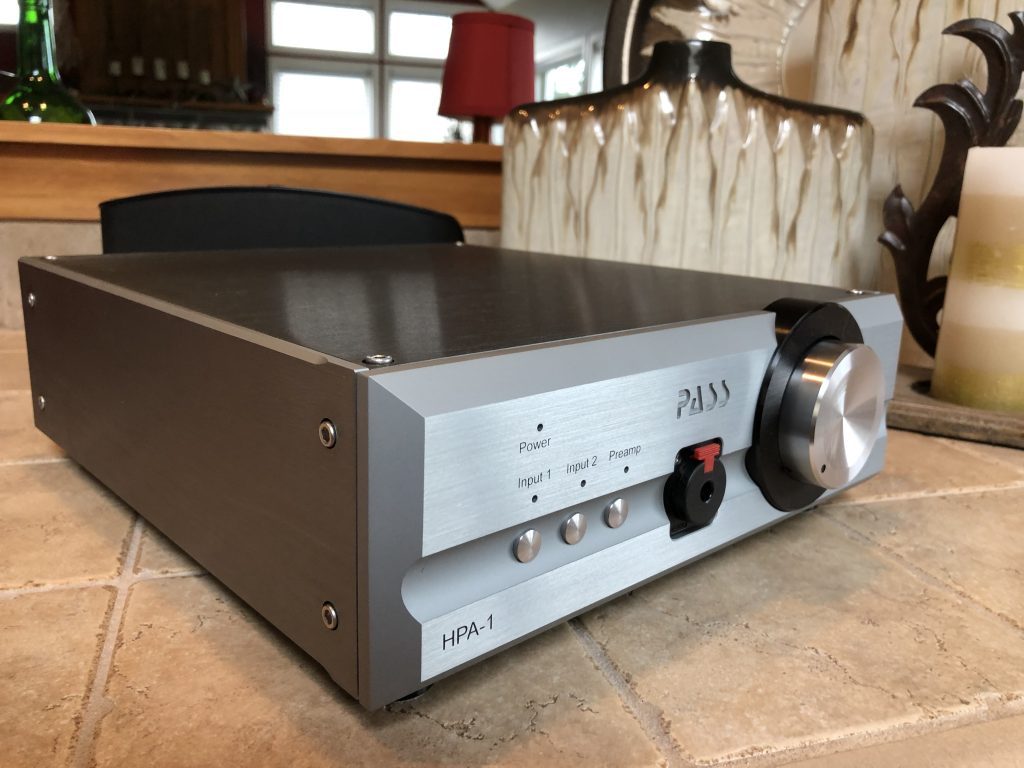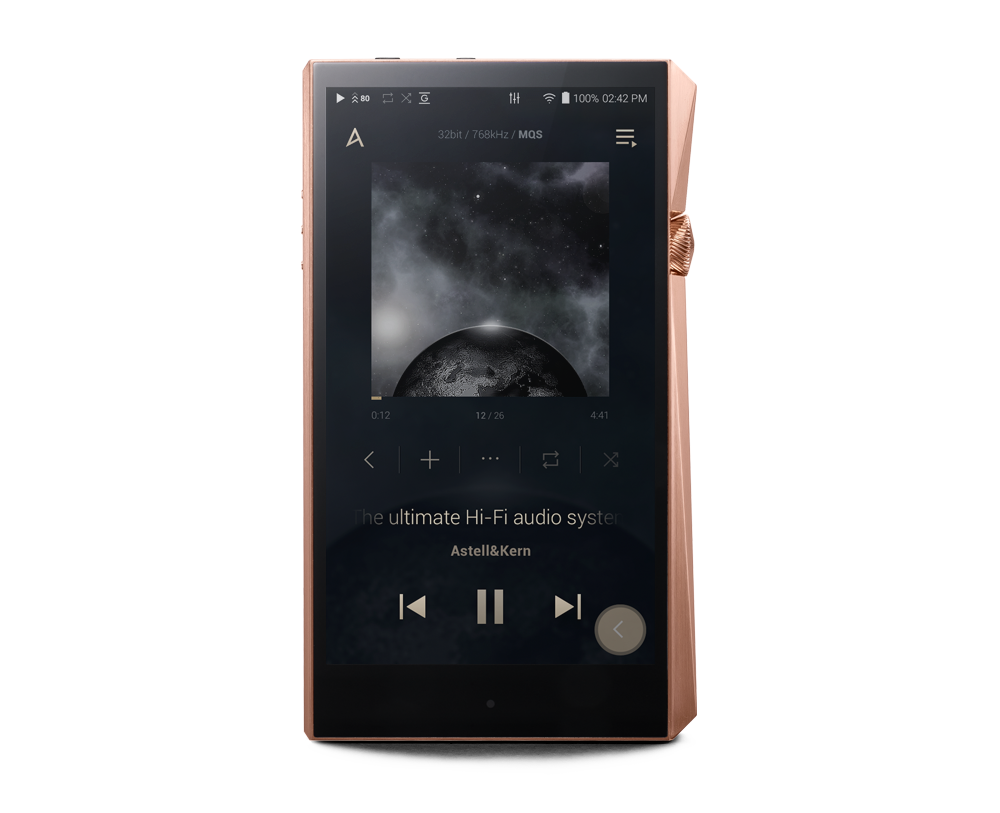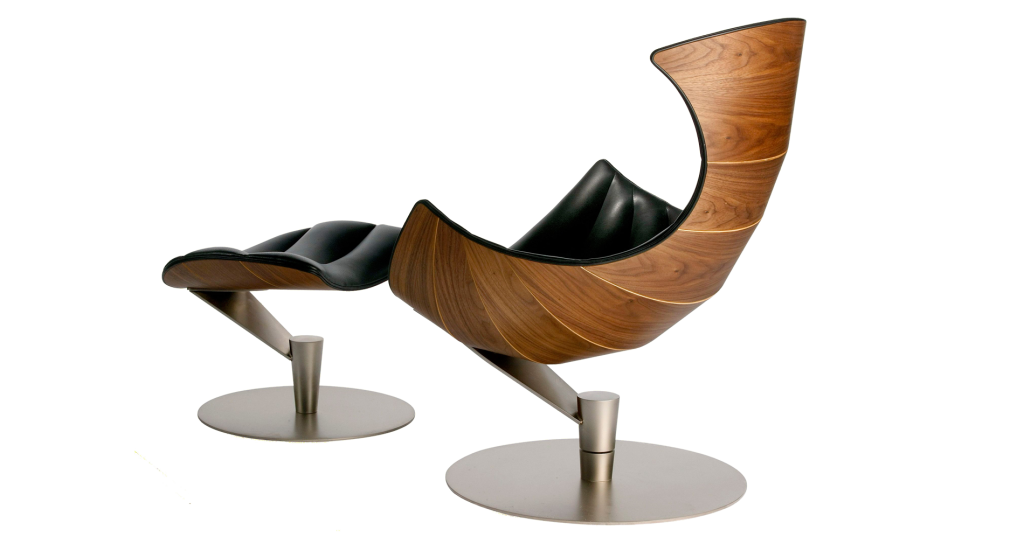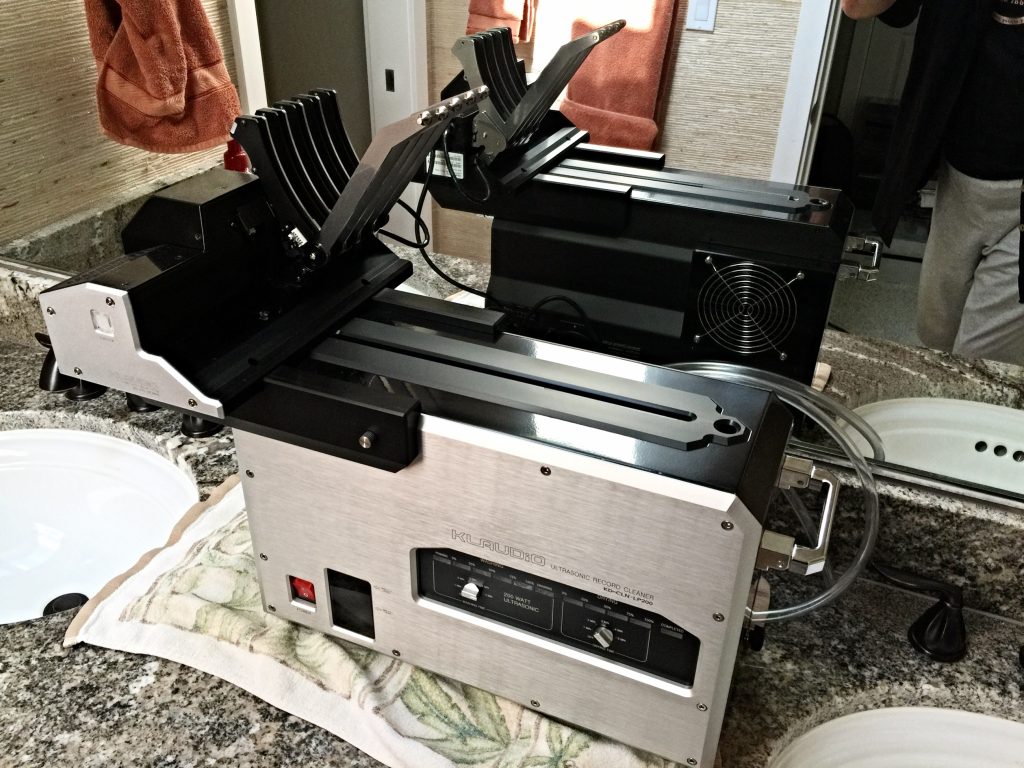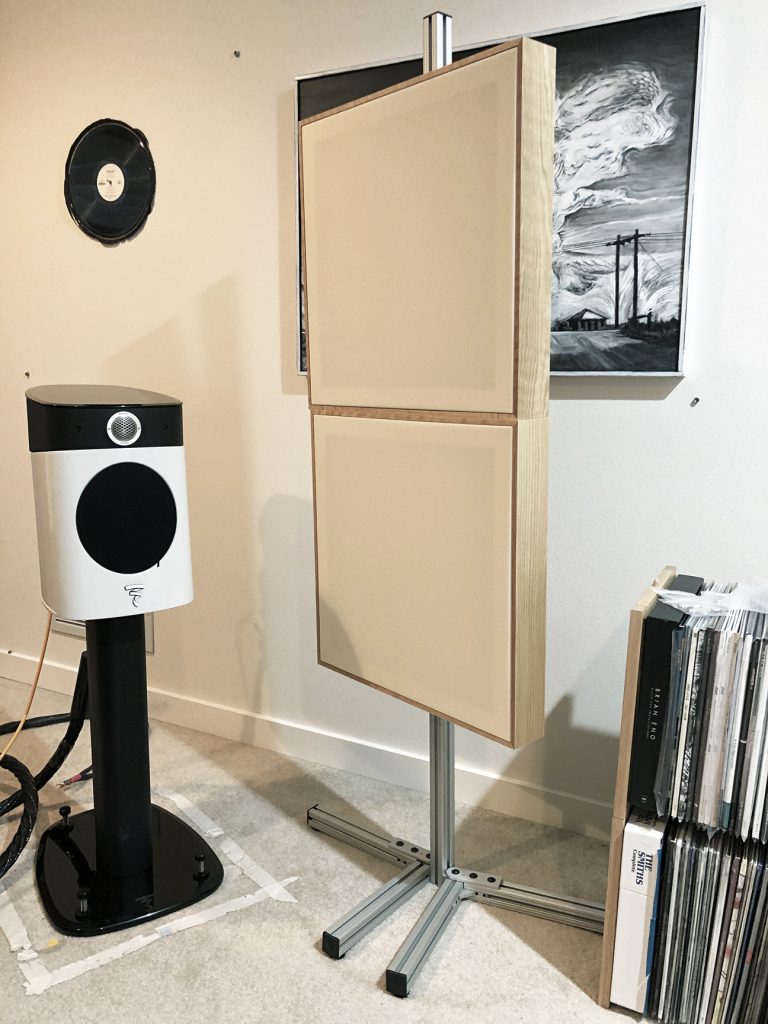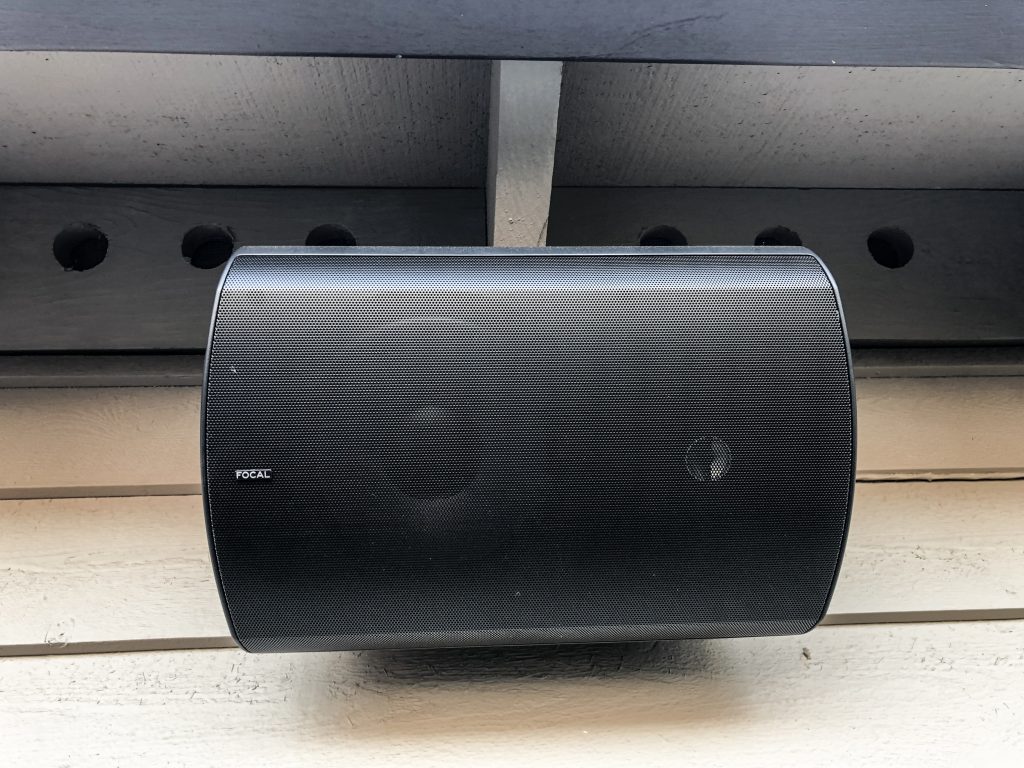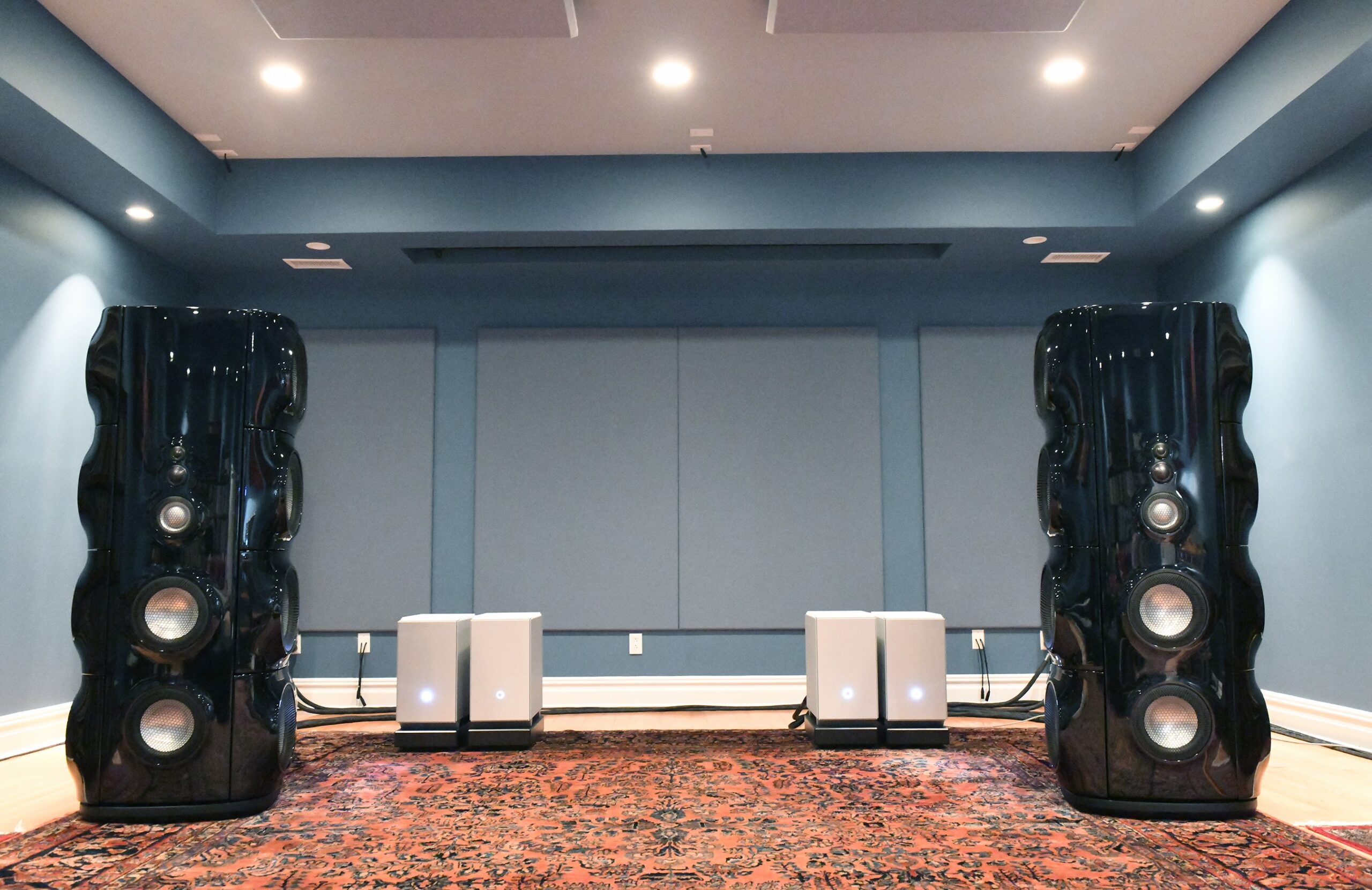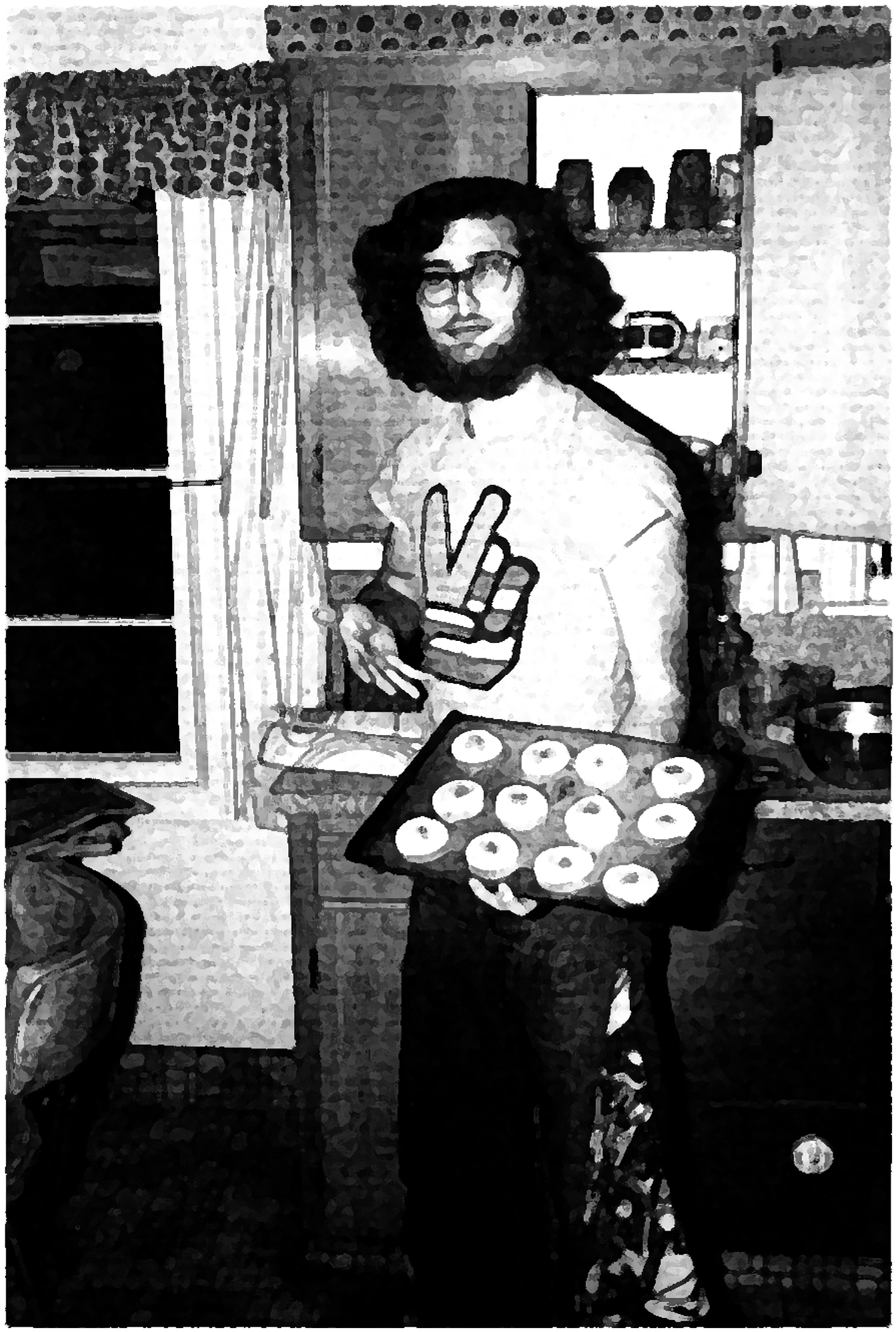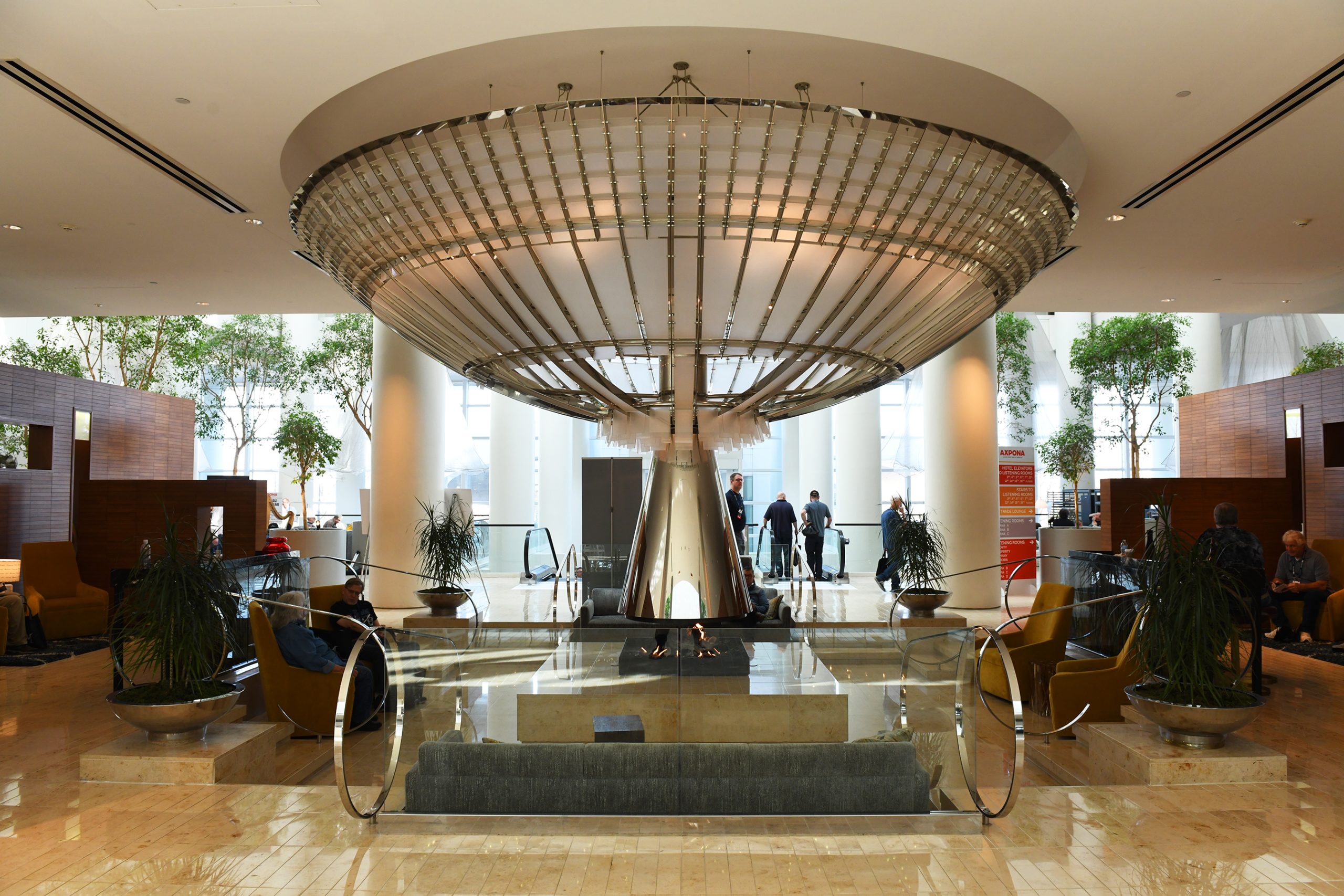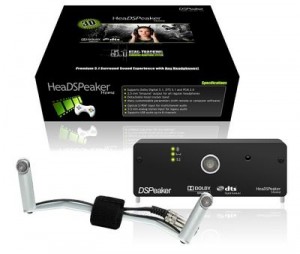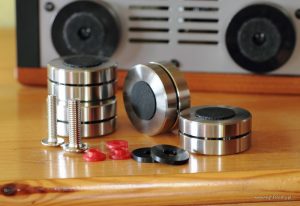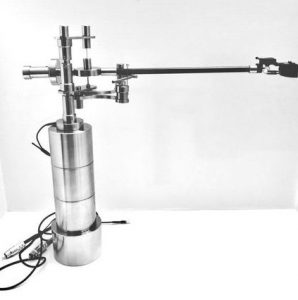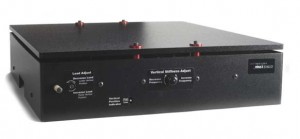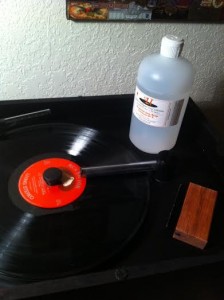
David W. Robinson, a portrait in late August of 2021. (Photograph by John Robinson.)
"We will serve no wine before its time." – Carlo Rossi
It's time.
I have a set of brief impressions about some of the audio gear that's made its way over here to Positive Feedback in 2021. The second year of the pandemic has made things noticeably more difficult to source and to accomplish evaluations of the products that have come my way. The result has been to produce a backlog of commentary that I need to catch up on, the first installment of which is here now.
And since not nearly every piece of audio kit needs me to write a War-and-Peace-full-blown "Impressions" review, I've gathered some smaller meditations on products that are worth your attention. I'll also be doing something new, beginning with this article: instead of publishing the main body of my 2021 Brutus Awards at the end of the year, I'll be awarding them in real time throughout the year. Better all around, I think.
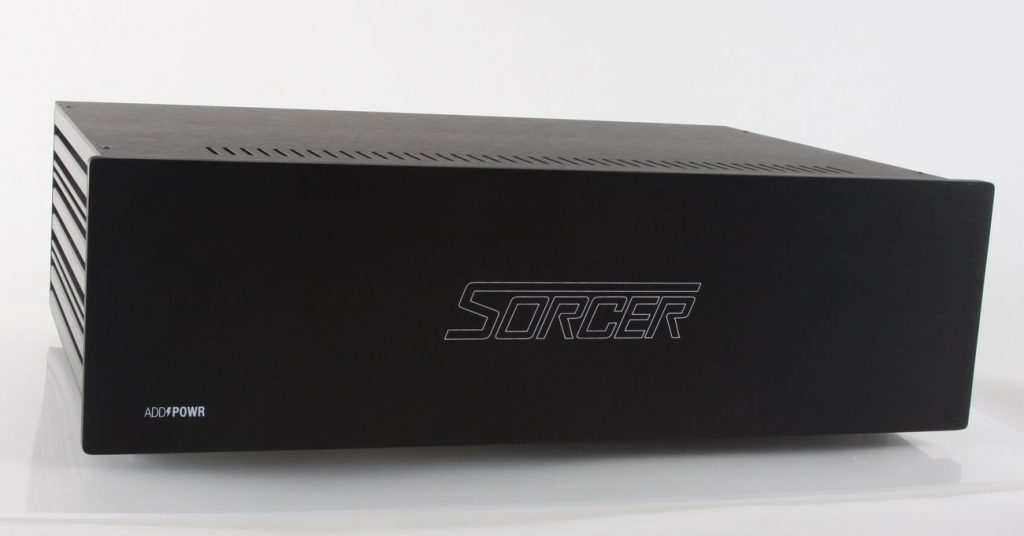
The Coherence Systems ADD-POWR Sorcer X4 (image courtesy of ADD-POWR)
I was approached early in the later summer of 2020 by Bill Stierhout of Coherence Systems to give a listen to one of his designs. They weren't like other AC power conditioners, power filters, or power distributors, he was at pains to say. Instead of conditioning/filtering the AC power in a high-end audio system, Bill said that his products created harmonic resonance in the local AC. The result of its operation is to improve the "integrity" of the audio output and the Signal-to-Noise ratio (SNR) by 1-2dB. According to Bill, his products apply Fourier's mathematical principles through the active use of algorithms, and...in the model being considered here...the use of four transformers. He is applying resonance principles to create lower frequency harmonics, which seek to deliver noticeable improvements in the quality of audio sound. It's complex stuff; best to hear from him directly in summarizing what he's about…though this is at some length.
He explains:
"ADD-Powr is in the business of creating harmonic resonance for consumer and professional electronics. The ideas behind our AC Line Harmonic Resonators are based upon principles of the Fourier series, resonance, and electromagnetic field theory.
The ADD-Powr algorithm incorporates a low frequency complex signal of a specific oscillation pattern. Mathematically speaking, a periodic complex waveform such as a square wave can be expressed as a harmonic series summation of sine and cosine waves interacting in various time phase relationships. This was the discovery of Joseph Fourier (1768-1830), the revered French mathematician and physicist.
In physics, resonance is the tendency of a system to vibrate with increasing amplitudes at some frequencies of excitation. These are known as the system's resonant frequencies. The resonator may have a fundamental frequency and any number of harmonics. The Fourier transform decomposes a function or a signal, a function of time, into its constituent frequencies.
The Wizard and Sorcer designs use an amplifier to interface with the secondary of an AC power transformer and induce a small signal of varying amplitude onto the primary side. They also generate and propagate a small field of low frequency through a system of coil antennae. The Fourier harmonics contained in the signal act to resonate with the audio signals in the hi-fi system. A complex wave "disturbance" rides along the AC line. Since it is a low frequency signal, it is not filtered away by power supplies, such as a/v component power supplies. Instead, it passes through the filter stages and becomes part of the DC reference supply voltage.
The Fourier transform concept can now be understood in this application. The Fourier series contains the fundamental driving frequency and its constituent related frequencies or overtones. These are called harmonics. Since the harmonics are sine and cosine waves of varying energy or weight (amplitude) and of varying time phases, it is the fundamental frequency that contains the most energy. As the frequency band is scaled upward, the harmonic series' energy or amplitude diminishes exponentially.
So what used to be a direct current/DC voltage reference is now a direct current/DC voltage reference with harmonic sine waves. The reference has been modified significantly. But what does that mean to the performance of an audio system?
When an audio signal (a complex function in time), with significant frequency information at around 100 Hz enters an amplifier stage, it will be processed/amplified as usual. But if the harmonic series that has been imposed upon the DC supply voltage also has a 100 Hz fundamental, then, we now have a condition of resonance at that exact instance. So the input signal will resonate with the DC reference fundamental frequency, or in this case 100 Hz. There will be an increase in the overall energy or amplitude of the audio signal in the amplifier. The 1st, 2nd, 3rd, etc. harmonics scaled upwards (out to infinity) in frequency from this modified DC reference will also harmonically resonate. Finally, the audio signal emitting from the loudspeaker will reveal an increase in its integrity, or an increase of as much as 1 - 2 dB in energy."
To clarify further, Bill states this on his ADD-POWR Web site:
"The Sorcer designs change the quality of the AC line (single phase) starting from the circuit breaker box and throughout the home or commercial space. It does not employ filters, isolation transformers, AC line regeneration, nor balanced power techniques. This harmonic resonator uses line transformers connected in series along with proprietary digital amplifier circuitry under algorithm control. The AC line is ‘re-referenced' or re-clocked with low frequency harmonics to increase the s/n ratio."
In other words, the local AC system is given a resonance that induces improvements in SNR, a resonance that is actively controlled by the ADD-POWR unit. I've seen something like this sort of active control years ago in the PF Hospitality Room, when the folks at Enteq loaned us one of their active power enhancement devices. It did make an audible improvement, but I don't think that their design at that time was like what Bill has accomplished at ADD-POWR.
All of this is fascinating; I admit that I was intrigued by Bill's thinking. Fortunately, one doesn't have to plumb the depths of the Fourier Function (that would require a very long conversation with Bill to be sure that I had its particulars well understood), or take on profound studies in mathematics in order to assess the affect that his design has on fine audio performance. So, I agreed to give his work a go in PF Central's stereo reference system. Given its quality, and after some additional discussion, I selected Bill's Sorcer X4 for evaluation. This is his current top product in this line.
The Sorcer X4 arrived at the end of August, 2020. Normally, I would have dug into it pretty directly, but I had several things that made this impossible at that time. One was an unusual heavy flood of new products coming in around that time, including new loudspeakers, cables, and some key electronics. Since I do not like to change more than one variable if it can be avoided, this pushed out the entry point in my queue for the X4.
The second involved delays with some products and the scheduling thereof, due to the pandemic. Enough said…it's obviously affected everyone in the industry.
The third my workload in other areas of my life. High-end audio is not nearly the only thing that's a passionate commitment of mine.
Finally, I went through a very serious health crisis in early August of 2020, one that took quite a while to fully recover from. Long hospital stays and protracted recoveries are no fun at all, and they play hell with audio reviewing.
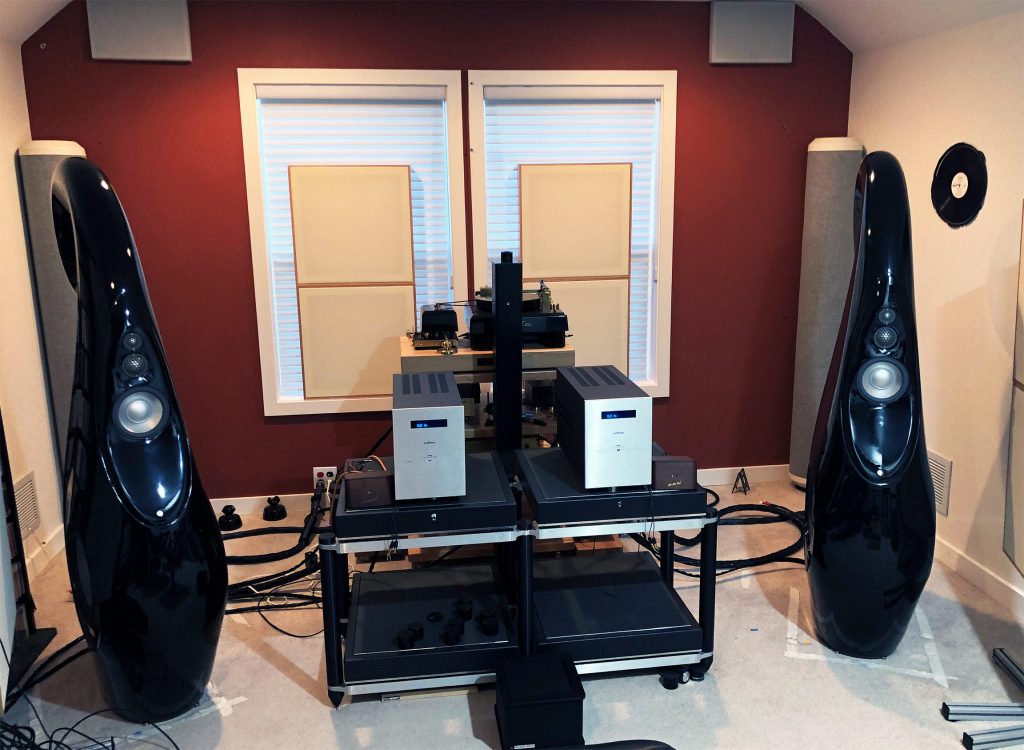
System 1 (see below) in place…
The installation of the Sorcer X4 is simplicity itself. Find an AC receptacle in your listening room – and plug it in.
Done!
Once back online, with a settled system at last, I was ready to give the Sorcer X4 a go. But I didn't just experience the effect of the Sorcer X4 with one system only. Over the next ten months, I had the following online:
System 1: Wave Kinetics NVS Reference turntable with Durand Tosca Tonearm and DS Audio DS Master1 Optical Cartridge with EQ/Phono Amp; Aurender A30 All-in-One Music Server; Playback Designs MPT-8 Reference Transport/MPD-8 Reference DAC; PASS Labs Xs Preamp; Critical Mass Systems and Stillpoints ESS Grid racks; Synergistic Research PowerCell SX Power Conditioner/Distributor; Audionet MAX Monoblock Amps; and VIVID Audio GIYA G1 S2 Loudspeakers.
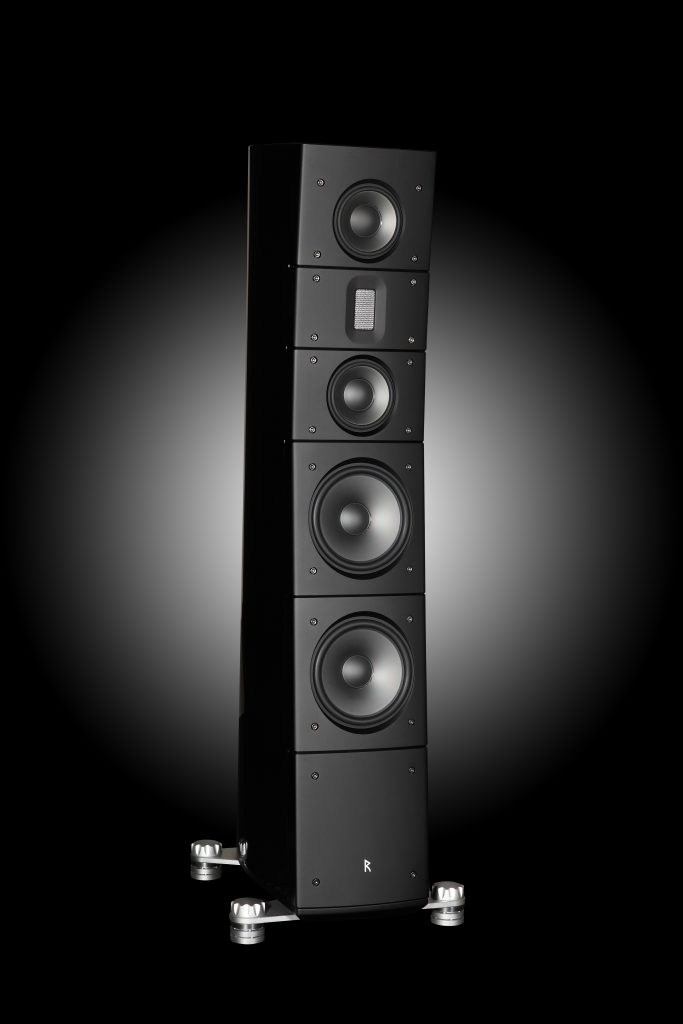
The Raidho TD 3.8 Loudspeaker (image courtesy of Raido Acoustics)
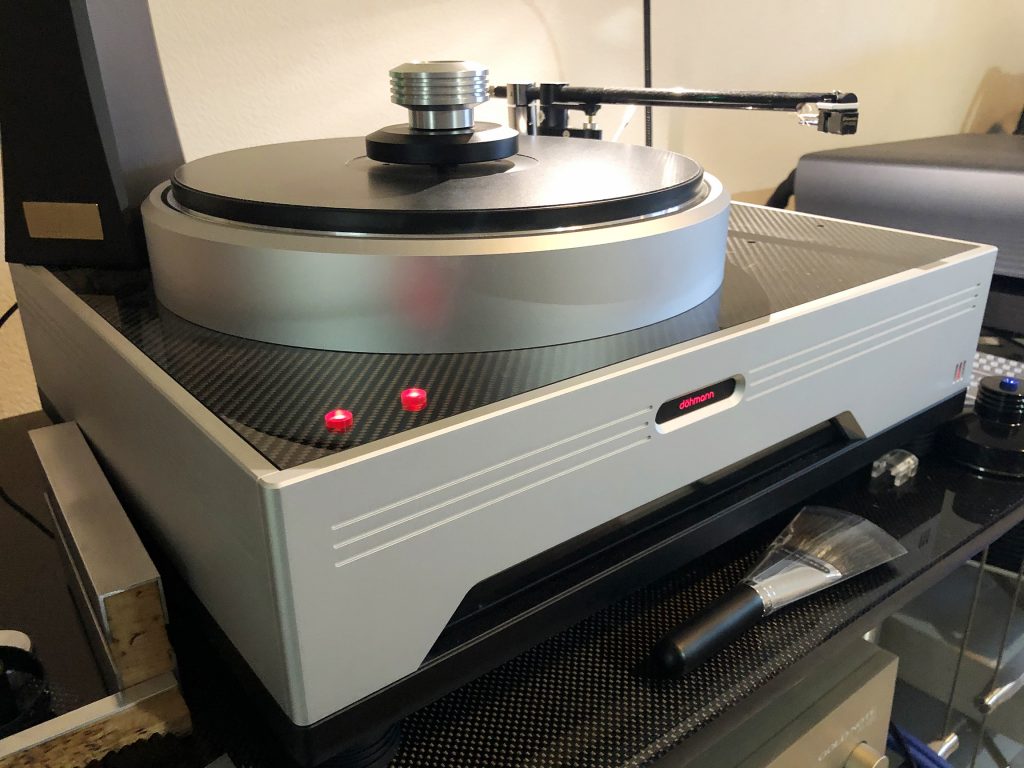
The Dohmann Audio Helix Two reference turntable
System 2: Later, I shifted to a second system. It was comprised of the Dohmann Audio Helix Two Turntable with Schröder BM-11 Tonearm, and the Phasemation PP2000 MC Cartridge; Gold Note Audio PH-1000 Reference Phono Amp and PSU-1250; digital sources as listed above; preamp and amplification as above; racks and power conditioning as above, dittoing the racks; and the very fine Raidho TD 3.8 loudspeakers.
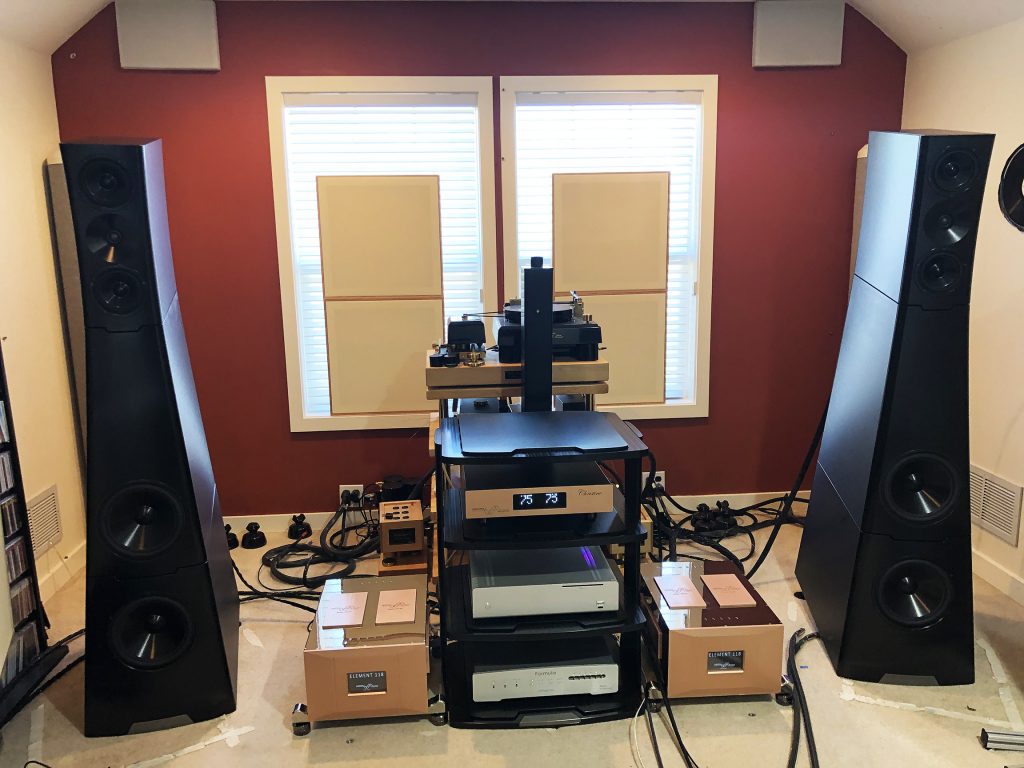
System 3 in operation
Running in parallel with both of the above, there's another system located betwixt the speakers on a Critical Mass Systems side-by-side double shelf rack, with the Christine preamp, the Wolf Audio Alpha 3SX Music Server, and the aqua acoustic Formula xHD Rev. 2 DAC, all feeding a pair of Merrill Audio Element 118 Monoblocks to either the VIVID or Raidho TD 3.8s. Source system switching was accomplished by powering off preamps and plugging XLRs from either one system or the other.
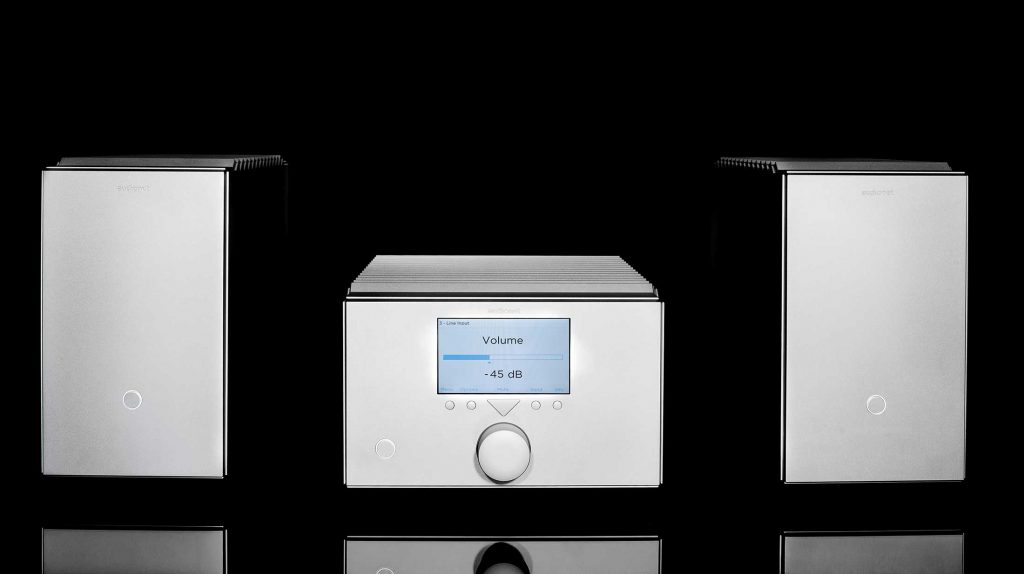
The Audionet Stern Preamp and Heisenberg Monoblock Amplifiers (image courtesy of Audionet)
Finally, over the past several months, our loudspeakers have shifted to the YG Acoustics Sonja 2.3i's, another stellar performer, being fed by the sources listed above, to the absolutely brilliant world-class reference designs, the Audionet Stern Preamp and a pair of the Audionet Heisenberg monoblock amps.
In other words, I've gotten to hear the ADD-POWR Sorcer X4 in conjunction with four different ultra-high-resolution systems. That's a pretty complete array for evaluation, and would be an acid test for this product. And frankly, it took more time to set the contexts than it will to comment on the Sorcer X4.
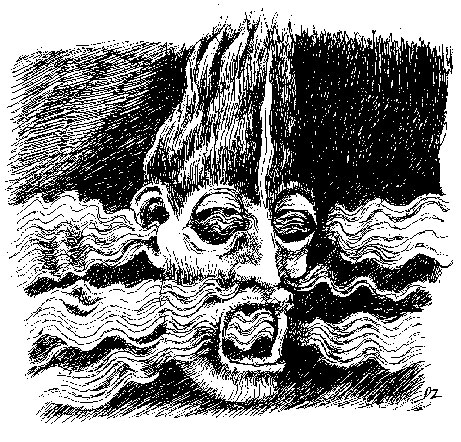
Drawing by Dan Zimmerman
It isn't necessary to write reams here. Cutting to the chase: Regardless of which of the four systems was in play over the past 8-10 months, the performance gains brought by the Sorcer X4 were immediately apparent. I heard greater detail in every source that I tried, both analog and digital. Dynamics were improved, and the noise floor dropped. Even with other system enhancements in the listening room, there was an additional performance gain that brings to mind the emphasis that some mean when they speak of "a greater blackness" in their systems…a loss of noise, and an improvement in the SNR.
It was as if the entire listening environment in our listening room had been brought into a greater harmony, resulting in greater relaxation while listening, and a smoother path to connecting emotionally with the music. A new effortlessness, and a natural ease, made the experience with the ADD-POWR unit really desirable. And the result was confirmed on four different audio systems of unquestionable virtue. Every time, the Sorcer X4 made its presence…and the absences that its presence brought…quite obvious. Don't think so? Try removing it from your system….
This sort of splendid result is a real ne plus ultra in high-end audio. If you have made a serious investment in your high-end audio system, you simply must consider purchasing the Sorcer X4. I for one find it to be unique in my audio experience, and it has become indispensable here in my listening room, and in my audio evaluations.
How much did I like the Sorcer X4 and the improvements that it brought to our reference systems here?
Well enough to make the arrangements to keep it. And that says it all.
Not quite all, though. There is this:
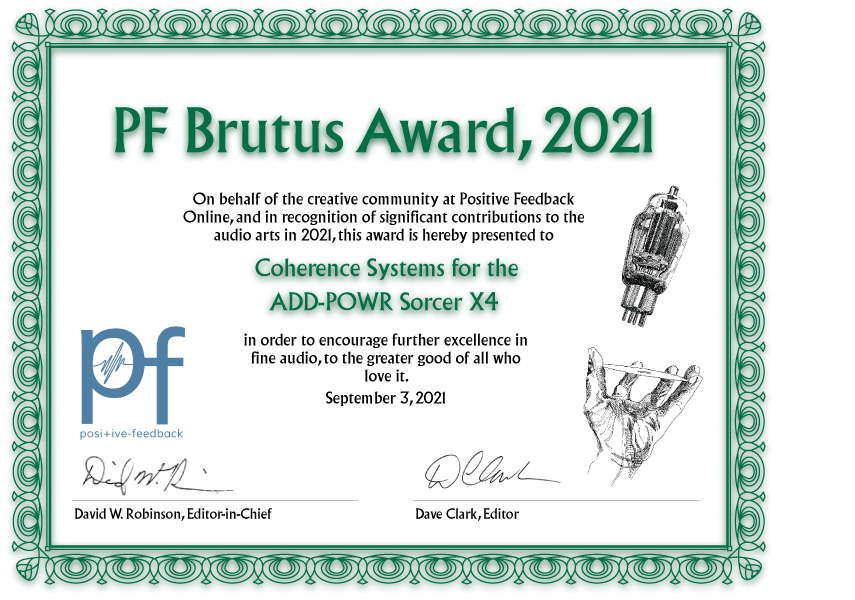
A Brutus Award for 2021 Bill Stierhout and ADD-POWR. He's on to something important here...listen up!
ADD-POWR Sorcer X4
Retail: $3,999.95
Coherence Systems/ADD-POWR
310.954.4837
All photographs and image processing by David W. Robinson, unless otherwise noted. Drawing by Dan Zimmerman.




